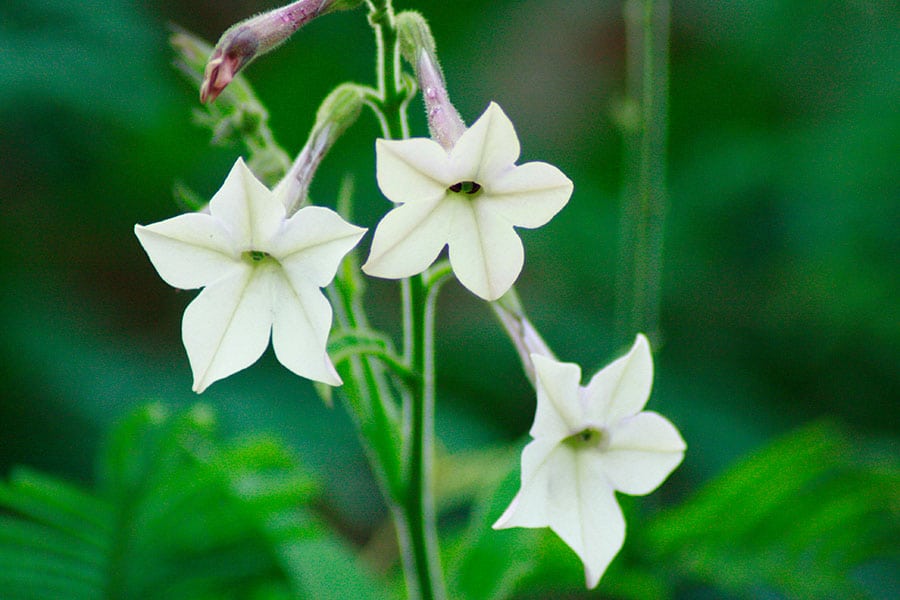
If you’ve ever seen a field of tobacco plants topped with their white flowers, you’ll be reminded of the familiar nicotianas we grow as summer annuals in our gardens. Both are closely related, bearing similar star-shaped flowers and slightly sticky foliage. My ancestors grew hundreds of acres of tobacco, and I suppose that might have influenced my affection for the ornamental nicotiana species and hybrids I enjoy in my garden. They’re attractive, have a broad colour range and some are highly scented.
Unfortunately, I lost track of the nicotiana seeds I was going to start under lights. These two species are difficult to find as started plants in nurseries — white, deeply perfumed Nicotiana alata (syn. N. affinis) and N. langsdorfii, with one-inch (2.5-cm)-long chartreuse to lime-green outward-facing flowers. Other species worth seeking out are N. sylvestris with drooping, white tubular flowers atop four-foot (120-cm) stems and N. mutabilis with white flowers that turn pink and finally magenta (chilternseeds.co.uk), with all colours present on the plant at the same time.
Most of the ornamental nicotianas we grow are native to Brazil, and would be at home in a semi-tropical jungle. Moths drawn to the flowers when they open at night and exude their intense perfume pollinate them. Even in an indoor vase, the blooms follow the twilight timetable for opening and releasing their fragrance. To my nose, N. alata is the most deeply scented, although N. sylvestris is also perfumed.
These species have been used to produce many hybrid forms of nicotiana in various colours and heights. However, the scent genes are capricious and not always present in the hybrids. I grew the Niki Series for several years, and only certain colours in the mix —usually white and purple — were fragrant. This week, I picked up some started plants of ‘Perfume Red’ and ‘Perfume Lime’ nicotiana already in bloom. The series’ name seems to imply all its colours have scented flowers, but so far, after a week of sultry hot weather and misty rain, there’s no fragrance. Perhaps there’s a combination of air temperature and humidity that sets them off, and we haven’t hit it. Or maybe the plants require a specific pollinating moth not yet on the scene.
I plant nicotianas in consistent light shade where they do quite well, although they would excel in full sunlight. However, they need more water in bright locations, and fall into a pathetic wilt if they don’t get their daily drink. Nicotianas are half-hardy annuals, producing generous amounts of seed in fall that lives under the snow, and germinates in spring. Self-sown seedlings are always welcome and can be transplanted to other locations.
Tall species nicotianas have a lax habit, and often work best with a friendly neighbour that’s able to provide a bit of support. White-blooming N. alata partnered with dark yew shrubs is a match made in heaven.
